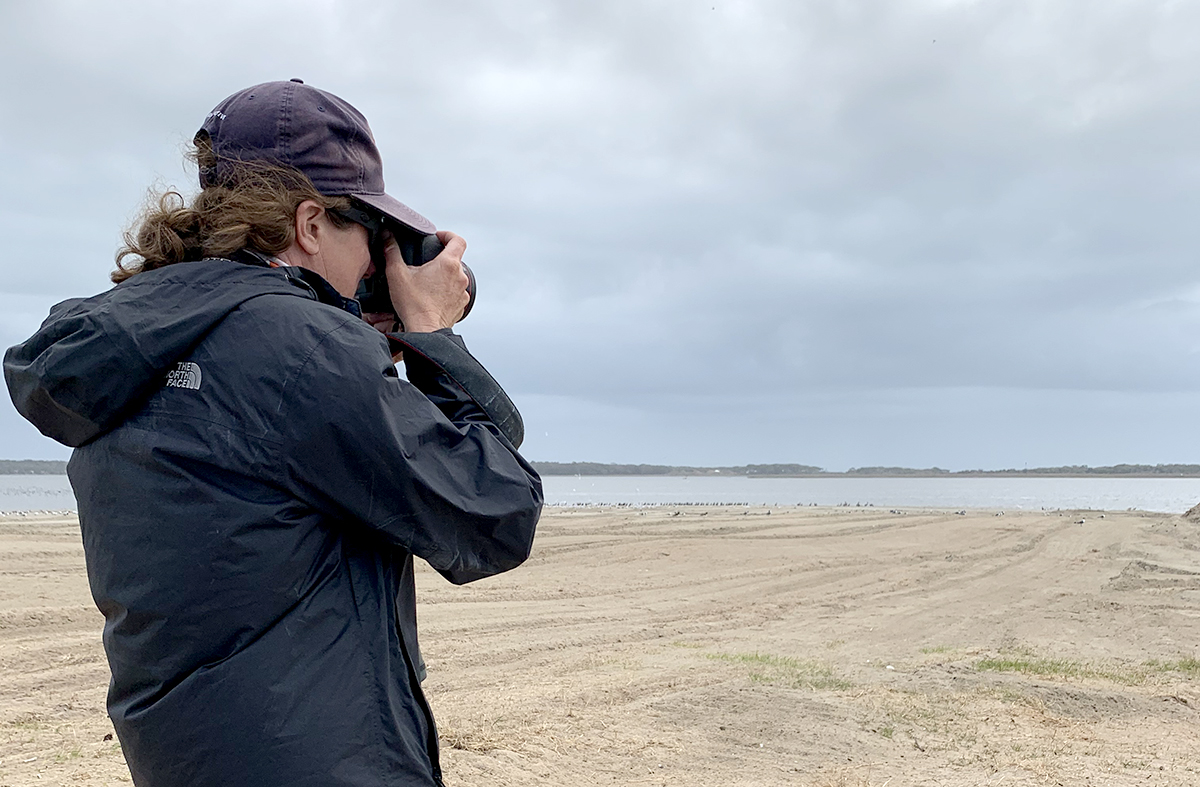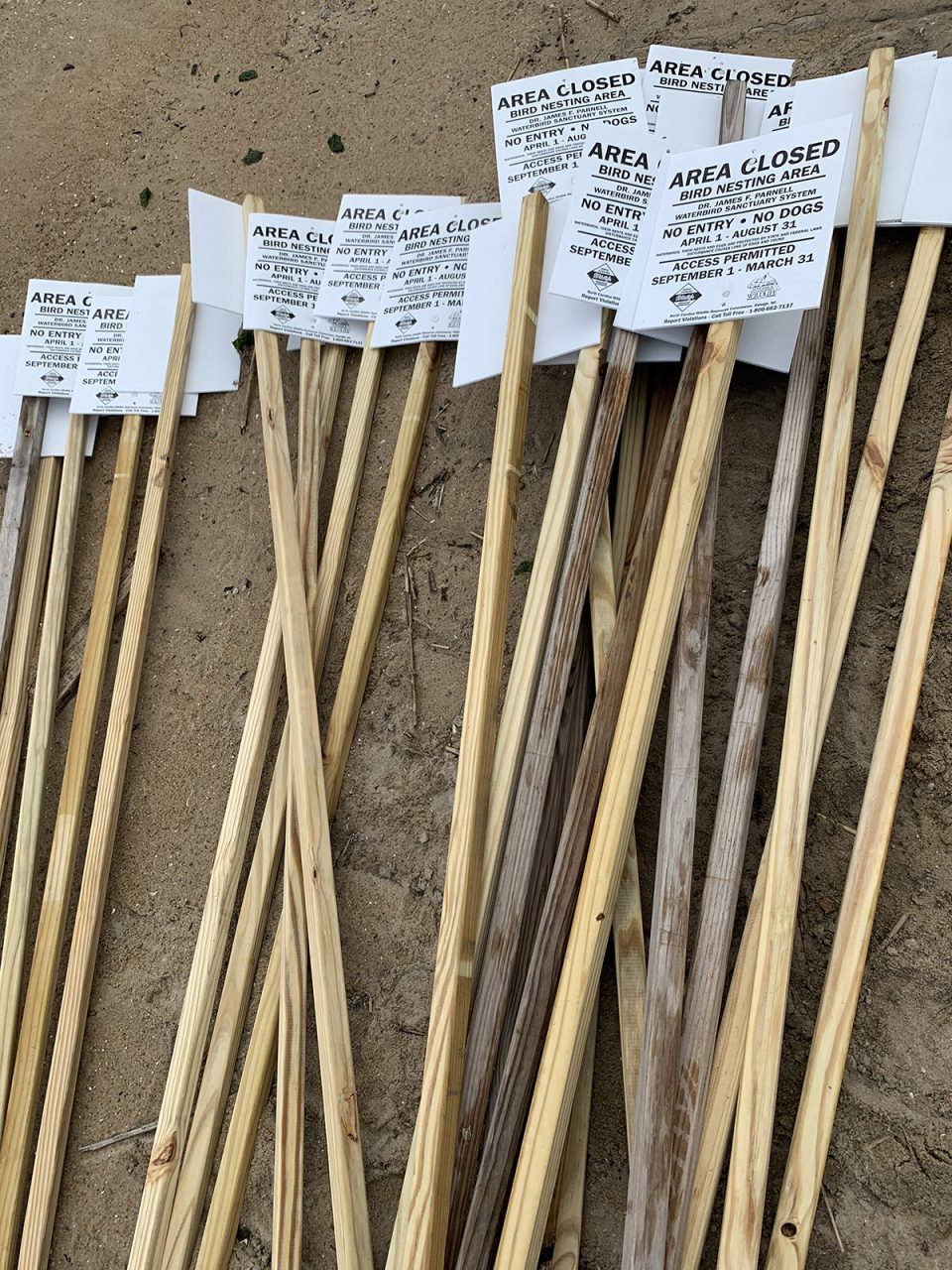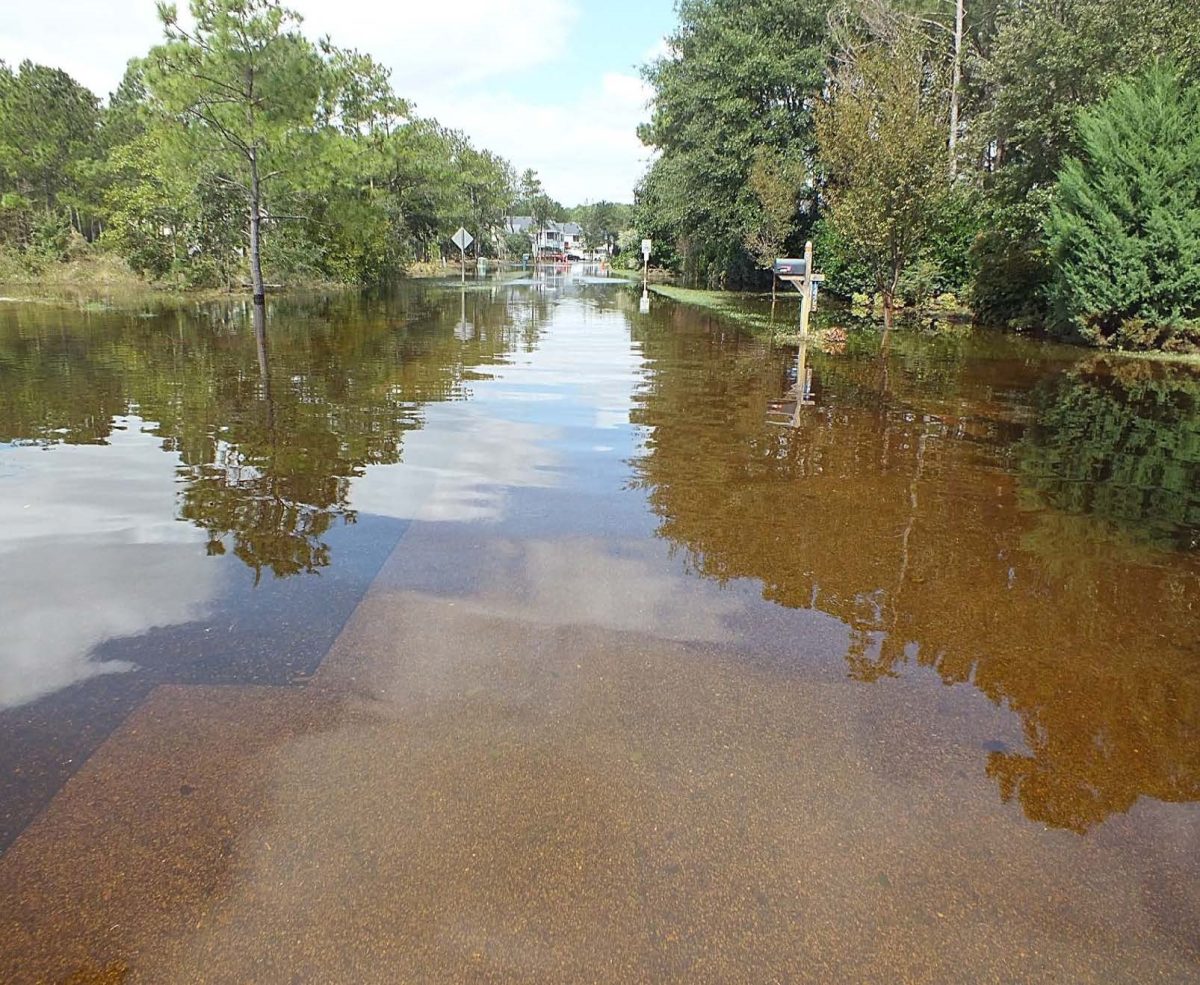
FERRY SLIP ISLAND – It’s not much to look at.
This island mound rises up from the Cape Fear River like a misshaped pancake — rounded and flat along one edge, fluffy and jagged on the other.
Supporter Spotlight
There are no trees or shrubs. A handful of small patches of grass break through the caramel-colored sand. More desert than oasis.
Alas, appearances can be deceiving.
This island is one of only two nesting spots along North Carolina’s southern coast for royal terns and sandwich terns and — good news for the terns — it recently received its first fresh batch of sand in 18 years.
In all, 80,000 cubic yards of sand was scooped from a shoaled-in area in the nearby shipping channel and pumped onto the island.
“It has taken many years for the channel to need dredging in that area so, finally, the stars have aligned, and we were able to receive the sand,” said Lindsay Addison, Audubon North Carolina coastal biologist. “It’s close to beach quality sand on the island. That means the birds are going to get improved habitat. There’s about six sites in this state where these species nest, so that’s not a lot of sites and so it’s really important that they’ve got these islands to nest on.”
Supporter Spotlight

Ferry Slip Island, the name given to it because of its proximity to the Fort Fisher Ferry Terminal landing, was created some 60 years ago as a dredge spoil disposal area for the U.S. Army Corps of Engineers.
Corps officials did not respond to Coastal Review’s questions about the project in time for publication.
After going nearly two decades without a sand injection, the island, battered by waves churned by storms and large container ships traveling to and from the North Carolina Port of Wilmington, had shrunk from more than 5 acres to less than 3.5 acres.
Unlike barrier islands, where erosion is a natural process that can create new habitat, dredge spoil islands like Ferry Slip are at the mercy of shoaling and machinery.
“In the case of the river islands, because they’re artificial, they’re not really self-sustaining. So they do need periodic dredge deposits,” Addison said.
Every five to seven years would be ideal, she said.

About nine islands in the lower Cape Fear River host nesting shorebirds most every year.
“Most of those islands are what we call important bird areas. So, they support a significant portion of the state population or they support a significant portion of the regional population of birds,” Addison said.
Ferry Slip and South Pelican Island, another dredged material island with view of the former, are the only two islands in the southeastern part of the state that support royal and sandwich terns. These black-crowned, gray-winged terns prefer low islands in sounds and estuaries.
“We’re usually talking (3,000) to 4,000 pairs of them, both species combined, between these two islands,” Addison said. “They like to nest on open, sandy habitat. Dredge islands, because they’re made out of dredged sand, have got that habitat.”
These islands are also inaccessible to foxes and racoons, animals that like to feast on the eggs and chicks, making them generally predator-free, with the exception of some bird species like the great horned owl and gulls.
There’s also little threat of human activity on the islands. Still, Audubon posts warning signs on the islands during nesting season.

After a brief, light rain one recent morning, Addison and two Corps officials made the quick trip by boat from the marina at Carolina Beach State Park to Ferry Slip to assess the newly sand-beefed island.
Hundreds of birds — dark-feathered double-crested cormorants, royal terns, laughing gulls and American oyster catchers — heavily peppered the island’s expanded shores, their chorus of shrieks and calls filling the air.
A single oystercatcher nest, no more than a slight indentation in the sand, was marked by its maker with wood planks that appeared to have drift ashore.
Intricate patterns made by birds’ feet indented the island’s sandy surface, interrupted only by the fresh tracks of a bulldozer used to push sand pumped onto the island.
Other than that, there are no signs equipment was on the island. Work has to be done by March 31, when the environmental window closes.
The spoil dredge islands are dedicated disposal sites for the Corps, owned by the state and managed by Audubon.
Audubon, in cooperation with the North Carolina Wildlife Resources Commission’s Habitat Management Division, manage vegetation growth on the islands, generally through use of an herbicide and, in some cases, burning, Addison said.
“In some years if we didn’t do any treatment (vegetation) would cover 100% of the island,” she said. “Other species will use it, like brown pelicans, but we don’t really need more pelican habitat. We have a lot of brown pelican habitat. The turns are the ones that are missing their habitat.”
Addison said she’s expecting a “good year” for nesting terns and oystercatchers.
“They are starting to arrive,” she said. “The timing of the project is really great because it’s wrapping up just as they’re arriving so they’re going to come back and see this nice, new habitat. It’s nice when there’s a project that has to happen for infrastructure reasons that can be good for wildlife. If this sand we’re going on these islands it would be taken offshore so it would be lost entirely from the system. You ideally want to keep sediment in these estuaries and inlet systems where they can form habitat and provide buffer for shoreline whether developed or undeveloped.”







